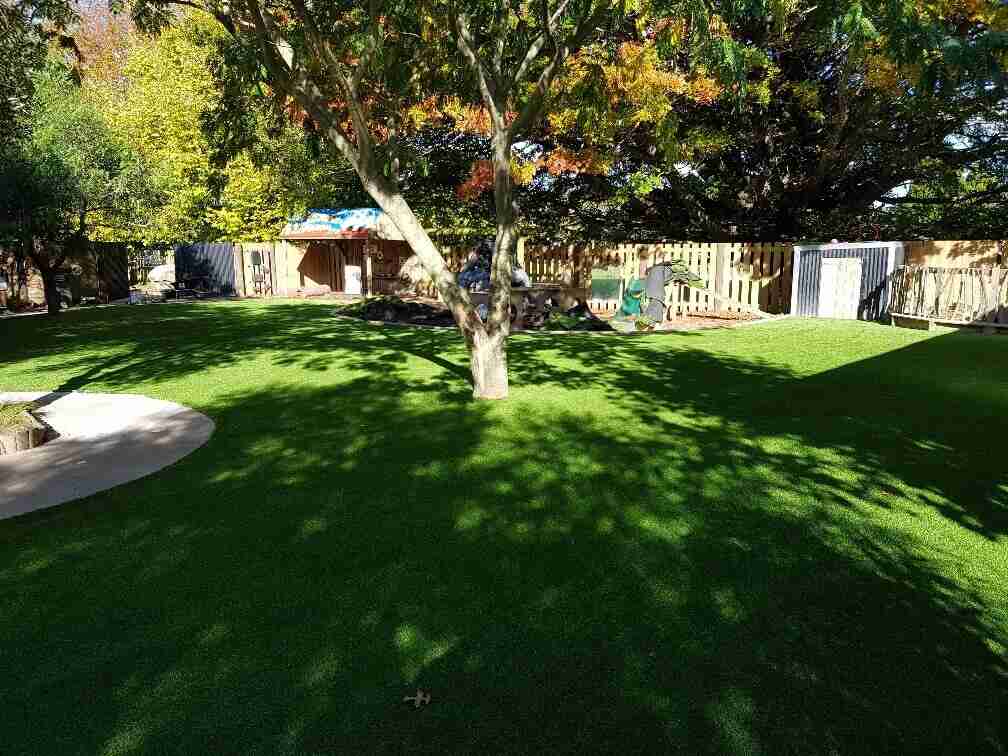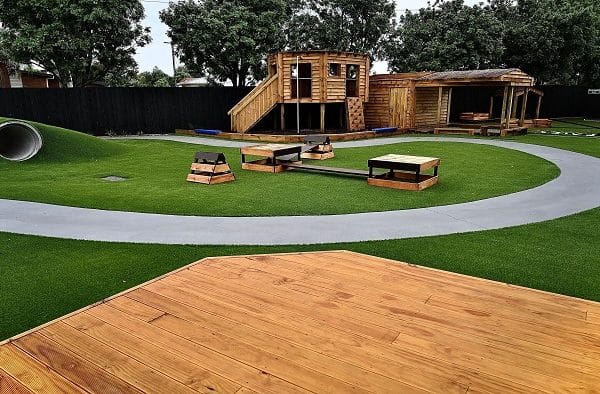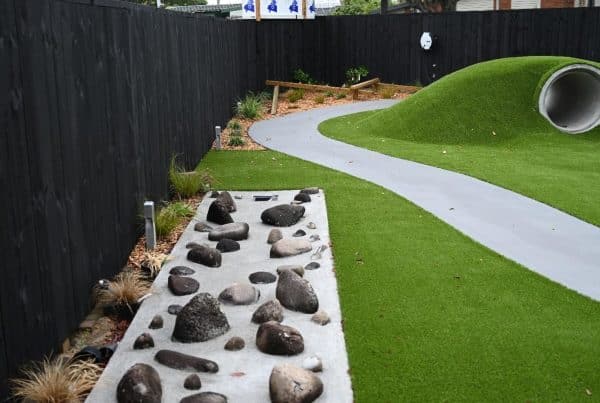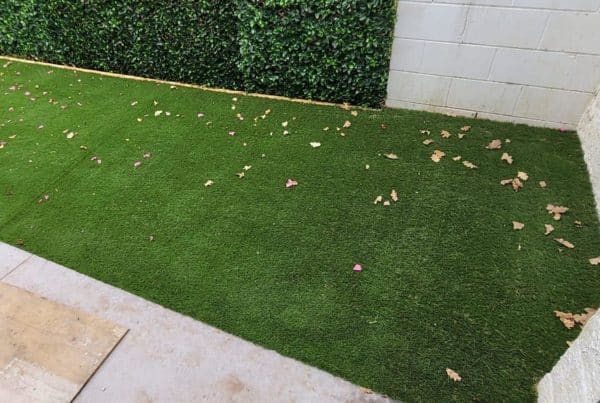Are you tired of maintaining a lush green lawn year-round? Are you looking for an alternative that requires less maintenance? Artificial turf grass is the solution you’ve been searching for.
In this article, we will explore the basics of artificial turf grass, answer common questions, and provide information on its installation, benefits, and maintenance. If you’re located in Auckland, Hamilton, Tauranga, or any of the other areas in New Zealand, Unreal Lawns is your go-to source for top-quality artificial grass products and services.
What Is Artificial Turf Grass?
Artificial turf grass, also known as synthetic grass or artificial lawn, is a man-made alternative to natural grass. It is made from synthetic fibres that are designed to mimic the look and feel of real grass. Artificial grass is used to create low-maintenance, green surfaces that can be installed in residential and commercial areas.
Different Types Of Artificial Grass
There are various types of artificial grass available, each with its unique features and suitability for different applications. Some common types of artificial turf grass materials include:
Nylon
Nylon artificial grass is known for its exceptional durability and resilience. It can withstand heavy use and is commonly used in high-traffic areas such as sports fields and playgrounds. The tough and robust nature of nylon makes it perfect for areas where there will be a lot of activity.
Polyethylene (PE)
Polyethylene artificial grass offers a softer texture and appearance that closely resembles natural grass. This type of grass is often used for residential lawns and landscaping projects. Its softer feel makes it more comfortable to walk on and it provides a lush and realistic look for your outdoor area.
Polypropylene (PP)
Polypropylene artificial grass is a more cost-effective option compared to other types. While it may not be as durable as nylon or polyethylene, it still serves its purpose well. Polypropylene grass is commonly used in temporary installations or indoor applications where a long-lasting solution may not be required. It can be a suitable option for events, trade shows, or indoor play areas.
Benefits Of Installing Artificial Grass
Switching to artificial grass brings a range of benefits for homeowners. From its durability and low-maintenance nature to its pet-friendly features and versatility in installation, artificial grass offers a convenient and visually appealing alternative to natural lawns.
Durability And Long-Lasting
Artificial turf grass is designed to withstand heavy use and extreme weather conditions. Unlike natural grass, it does not fade or become patchy over time. With proper installation and maintenance, artificial grass can last for many years, providing a consistently vibrant and attractive lawn.
Pet-Friendly And Hygienic
Artificial grass is a great option for pet owners. It is resistant to digging, staining, and odours. It also provides a clean and hygienic outdoor space for your furry friends, as it doesn’t require the use of harmful pesticides or fertilisers.
Versatility And Aesthetics
Artificial turf grass can be installed in various areas, including gardens, balconies, and rooftops. It offers a consistent and visually appealing green space all year round, enhancing the overall look of your property. It also eliminates the hassle of mowing, watering, and weeding, saving you time and effort.
How To Install Artificial Turf Grass
Installing artificial grass requires proper preparation and attention to detail. Here are the necessary steps involved to get you started.
Laying The Turf
Remove existing vegetation and debris from the area where you want to install the artificial grass. Level the ground and create a smooth surface using a rake or shovel. Then, lay a weed barrier fabric to prevent weed growth and ensure a stable base for the artificial grass. Roll out the artificial grass over the area and trim it to fit, leaving a small gap for expansion.
Securing And Infilling
Secure the artificial grass using garden stakes or adhesive, ensuring it remains flat and in place. Apply an infill material, such as silica sand or rubber granules, to improve stability and provide cushioning.
Finishing Touches
Trim any excess grass using a utility knife to achieve a neat and finished look. Install any additional components, such as edging or drainage systems, if required.
Artificial Grass Vs. Real Grass: A Comparison
When it comes to choosing between artificial turf grass and real grass, consider the advantages each option offers. Here’s a breakdown of the key differences between artificial turf grass and real grass.
Maintenance
Maintaining a natural lawn requires regular watering, mowing, and fertilising. This can be time-consuming and costly, as well as dependent on weather conditions and seasonality. Additionally, real grass may develop thinning areas, and bare patches, and require regular weeding to maintain its appearance.
On the other hand, artificial grass is virtually maintenance-free. Once installed, it requires minimal attention. You no longer need to worry about watering, mowing, or fertilising. It provides a consistently lush and weed-free surface without the hassle of regular maintenance.
Appearance
Natural grass has its charm and offers a vibrant green colour. However, its appearance can be affected by factors like weather conditions, pests, and foot traffic. Real grass may become discoloured or patchy, especially in areas with high foot traffic or adverse weather conditions.
Artificial turf grass provides a consistently green and vibrant appearance throughout the year, regardless of weather conditions. It maintains its lush look even in areas with heavy foot traffic, making it ideal for both residential and commercial applications.
Ecology
Maintaining a natural lawn typically requires the use of pesticides, herbicides, and other chemical inputs to control weeds and pests. Watering a real lawn also consumes a significant amount of water, which can be wasteful and unsustainable, particularly in regions prone to drought.
Choosing artificial grass can help reduce your environmental impact. As artificial grass eliminates the need for pesticides, herbicides, and fertilisers, it promotes a more eco-friendly approach to landscaping. The reduced water consumption also makes it a sustainable choice, especially in areas with water scarcity.
Top Uses For Artificial Grass
Artificial grass is becoming an increasingly popular alternative to real grass due to its durability, low maintenance, and aesthetically pleasing appearance. Here are the top uses for artificial grass.
Commercial Landscaping
Artificial turf grass is widely used in commercial spaces to create visually appealing landscaped areas. From office buildings to shopping centres, artificial grass provides a low-maintenance and attractive outdoor environment.
Pet Areas
Artificial grass is an ideal solution for pet owners who want to create a clean and comfortable outdoor space for their pets. With its durability and resistance to pet waste, you can rest assured that your pet will have a low-maintenance and hygienic area to play and relax.
Artificial grass is designed to withstand the wear and tear that comes with having pets, making it an ideal choice for creating a pet-friendly environment. Cleaning up is also easy, as any mess can be easily removed and the area can be rinsed clean.
Playgrounds
Artificial grass provides a safe and cushioned surface for playgrounds, reducing the risk of injuries caused by falls. It also requires minimal maintenance, making it a practical choice for high-traffic areas.
Maintaining And Caring For Your Artificial Lawn
Maintaining an artificial lawn is simple and hassle-free. Following these maintenance tips can keep your artificial lawn looking its best and prolong its lifespan.
Regular Debris Removal
Remove debris and leaves from the surface of your artificial lawn regularly. This can be done by simply sweeping or using a leaf blower. This will help prevent any buildup or infestation of insects or mould.
Occasional Rinsing
To keep your artificial grass clean and free from dust or dirt buildup, it’s recommended to occasionally rinse the grass with water. This can be done with a garden hose or sprinkler system. By doing this, you’ll maintain the fresh and vibrant look of your lawn.
Brushing the Grass Fibres
Over time, the grass fibres of your artificial lawn may become flattened or matted due to foot traffic or weather conditions. To restore their upright position and maintain a natural appearance, use a stiff broom or brush to gently brush the grass. This will help the fibres stand upright and give your lawn a lush and full look.
Pet Waste Cleanup
If you have pets, promptly clean up any pet waste from your artificial lawn. Use a poop scoop or plastic bag to remove the waste. Afterwards, rinse the area with water to ensure cleanliness and prevent any odour or staining. Artificial grass is designed to be pet-friendly, and by properly maintaining it, you can keep it hygienic and odour-free.
Get Artificial Turf Grass For Your Lawn Today
If you’re tired of the never-ending task of maintaining a beautiful lawn year-round, artificial turf grass is the solution you’ve been searching for. Don’t wait any longer — make the switch to artificial turf grass and enjoy a consistently lush and vibrant lawn without the hassle of regular maintenance.
Ready to enjoy the benefits of a beautiful and low-maintenance lawn? Unreal Lawns provides top-quality residential and commercial artificial grass products and services. Say goodbye to watering, trimming, and weeding, and say hello to a gorgeous lawn that stays vibrant all year round. Unreal Lawns covers most North Island districts, from Waikato to Manawatu-Wanganui.
For more information about artificial turf grass, check out some FAQs about artificial grass or contact us now to transform your lawn into a stunning artificial grass landscape!





